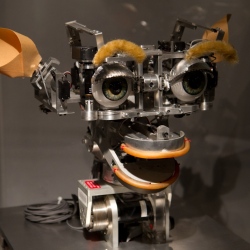
On Kickstarter there’s a robot that brews beer, a robot that tunes your guitar, a robot that is a 3D printer. There’s a robot refrigerator, a robot alarm clock, a robot desk lamp. In the Internet of Things, bot is the new dot-com, a suffix that confers the mystique of technological innovation on the otherwise mundane. Everything with a few wires in it is apparently robot material.
It’s understandable that inventors, public relations professionals, and even tech journalists would want to call something a robot rather than an alarm clock with wheels. It sounds more complicated, more exotic, more valuable. But isn’t there a difference between a robot and a machine, an automaton, and an appliance?
Unfortunately for the language police, there sort of isn’t. The reason “robot” is such an easy term to abuse is because it’s such a hard one to define. Brad Knox is a robotics researcher at MIT’s Media Lab, and in an e-mail he puts it this way: “The term ‘robot’ … lacks a black-and-white border. Worse, ‘robot’ lacks even a grayscale border that’s consistent across different people’s usages.”
Artificial intelligence researchers tend to use it to refer to machines that are either autonomous or can sense their environment and respond in such a way that affects that environment. Intelligence, of course, is a famously tricky term to define. As Knox points out, a clothes dryer that gauges the wetness of the clothes inside it and adjusts accordingly meets the basic definition. So does a laptop, he adds, “since it ‘senses’ the world through a keyboard, a mouse, etc. and acts through a screen and speakers.”
The blurriness isn’t simply semantic, either. Jan de Ruiter, a psycholinguist at the University of Bielefeld, in Germany, is working on research to create robots that can read facial expressions. Human beings, he points out, are incorrigible anthropomorphizers, and it takes remarkably little to get us to ascribe intention—even personality—to machines. “When a printer doesn’t work, and it’s indicating that the paper is jammed but actually the problem is something else, people talk about how the printer ‘thinks’ there’s a paper jam,” he says.
